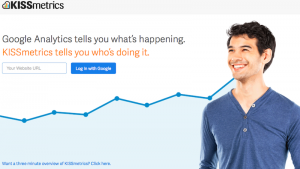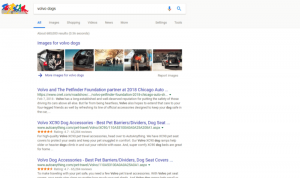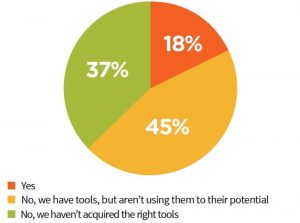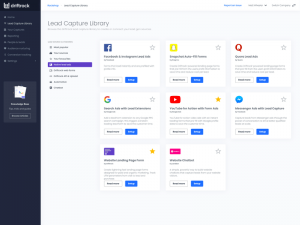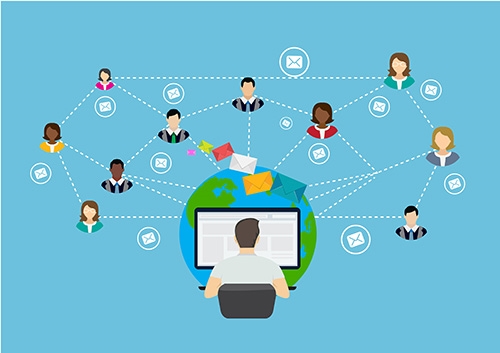
In 2019, it was estimated that the number of active email accounts would hit 5.6 billion. Those 5.6 billion accounts equate to a lot of opportunities for your email marketing. While every email account certainly won’t be a part of your target audience, the rising number of active email accounts reinforces email’s viability as a marketing channel for connecting with prospective customers and spreading brand awareness across a wide user pool.
And as the number of email accounts grows, so do the trends, strategies and opinions surrounding email marketing. To help your marketing team break through the noise and make the most of email marketing in the new year, we’ve pinpointed some of the top tactics you’ll want to adopt for 2020.
Tip #1 – Use Tactful Personalization
When surveyed, 72% of B2B buyers expect companies to personalize communication with them. Much like B2C buyers, B2B audiences are looking for marketing communication that feels tailored to their concerns. Consequently, your email efforts should cater to your target audience’s unique interests and provide them with value.
So, what’s the optimal way to implement personalization? There are several routes to integrate personalization throughout your marketing. 51% of marketing influencers found that segmenting email lists was the most effective form of personalization, while 50% of marketing influencers felt that individualized email campaign messaging was the most lucrative.
A simple yet effective way to segment your emails is to divide them by personas. This way, you can create content that is specific to each persona your marketing team has created and send communications to the specific segment you want to reach and target. To create campaign messaging that is individualized beyond the persona level and more focused on the person themselves, you can insert recipients’ names into campaign emails, as well as other unique details, such as company name or industry-specific components that demonstrate your understanding of who they are as a buyer.
Subject lines are another key component of personalization and segmenting. Subject lines are often the hook that leads to opens and ultimately clicks, so it’s important to craft subject lines that speak to your segment personally and authentically. Creative and personalized subject lines get a 26% higher chance of being opened than bland, generic phrases. Where it makes sense, consider testing out emojis in your subject lines. Forbes found that 56% of brands using an emoji in their subject line had a higher open rate than those that did not.
Tip #2 – Streamline and Simplify Your Content
Just as many people continue to use email, they also continue to use their phones when checking their email. More than 5 billion people own mobile devices and 53% of emails are being opened on mobile devices. With so many people accessing your emails via mobile devices, it’s imperative that you optimize your emails for mobile. Most email building software will include an option to view your emails on different devices. If not, you can use the “Inspect” feature on Google to view the responsiveness of your HTML email and see what it looks like on different mobile devices.
Another way to optimize emails for mobile is to consider the elements that might not translate as well on the smaller screen size. For instance, keep images to a minimum, so that your email doesn’t look crowded or convoluted on a mobile device. The same goes for the text of your email. Typically, it’s always a good practice in email marketing to keep your messaging and language concise and poignant. When considering the design or layout of your mobile-optimized email, keep the text you do have broken into clear sections as opposed to large blocks that may feel overwhelming, while also using buttons as your call-to-action (CTA) so it’s easy for email recipients to spot and navigate to the rest of your intended content.
You can also keep the process streamlined and simple for recipients by ensuring your email content is easy to share on social. Your email subscribers are 3x more likely to share content via social media than visitors coming in from other channels. Simply adding in social icons to the footer of your email is a great way to make sure that email subscribers can find you on social. You can also use a link generator to create custom links to your content and posts so recipients can share your posts right away.
Tip #3 – Send Emails Regularly and on the Ideal Day
It comes as no surprise that the day and time you send your emails can have a large impact on the open rates and engagement. Of all the days of the week, emails sent on Tuesdays receive the highest open rates. Particularly in the B2B world, you want to time your email sends so that they align with an audience that’s operating on business time. Weekend sends are not ideal since during the weekends B2B buyers are more likely to turn into B2C buyers, shopping for personal consumer goods instead of focusing on business purchases.
It’s also essential to develop a regular cadence and thoughtful timing with your email sends. At a minimum, you should be reaching email subscribers once a month. A more frequent cadence will depend on your particular audience. That’s why tracking email marketing performance (via open rates, click rates, etc.) is essential for understanding how much or how little your audience wants to be communicated with. If you notice unsubscribe rates are increasing or open rates are slumping, consider rethinking how often you send your emails.
Once you perfect the cadence at which your audience wants to hear from you, be sure to stick to that rhythm. If you’re sending emails highlighting a recent blog post every other Tuesday of the month, and a newsletter on the last Wednesday of each month, then keep that schedule consistent. It’s important that your audience comes to expect your emails as part of their inbox and recognize that you’re continuously committed to delivering them valuable information and content that’s attuned to their needs and interests.
Executing Your Best Email Marketing Strategy
Setting yourself up for email marketing success in 2020 involves a look back at some of the prominent trends and discoveries that shaped 2019 strategies. By evaluating these statistics gathered from the previous year, we can see what trends will guide us through important email marketing decisions in 2020. While these tips are an important baseline for strategizing and planning emails for the new year, it’s also important to assess the trends and statistics that made up your own email marketing data, so you can capitalize on what resonated most with your target audience.
Digital & Social Articles on Business 2 Community
(57)


